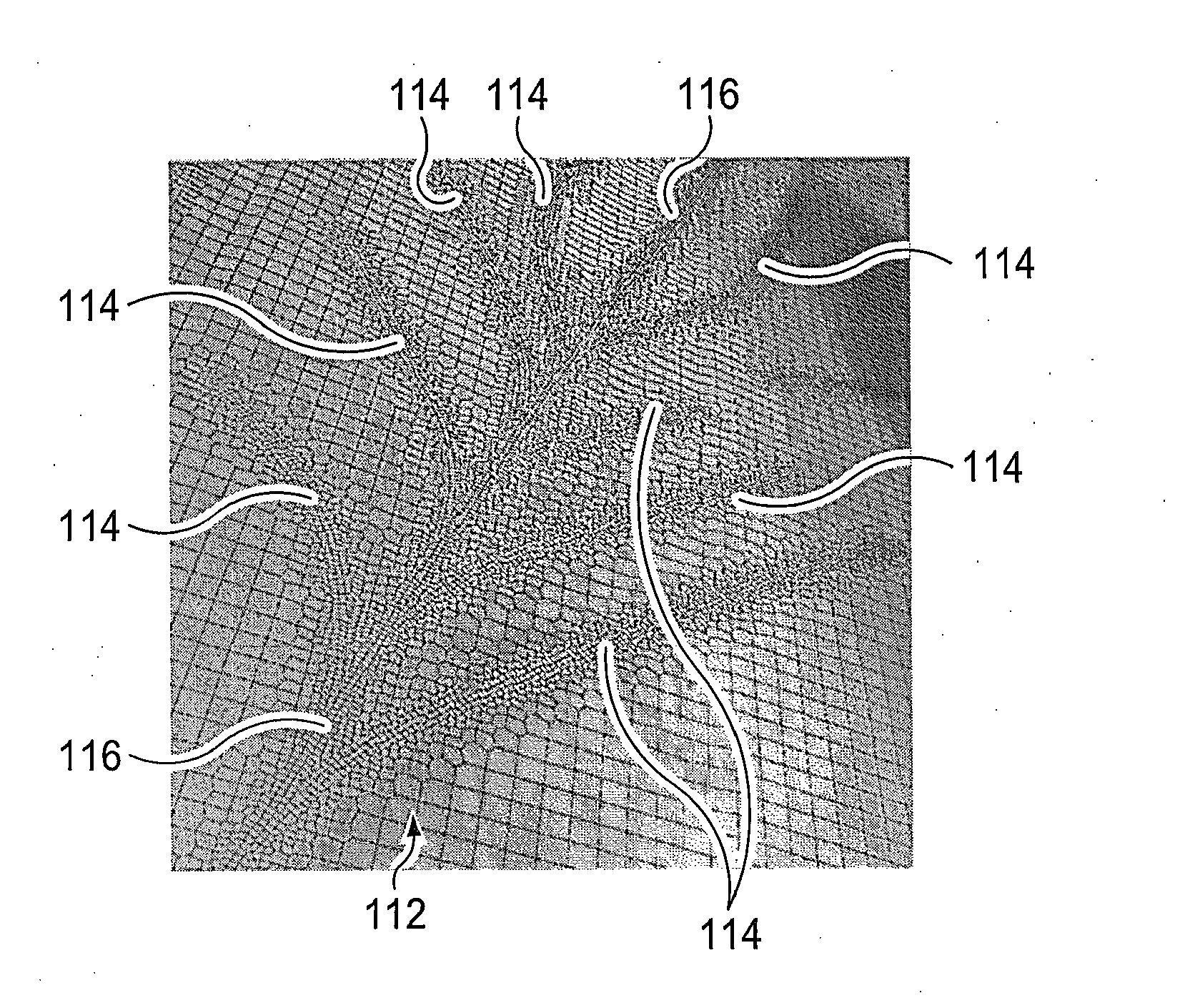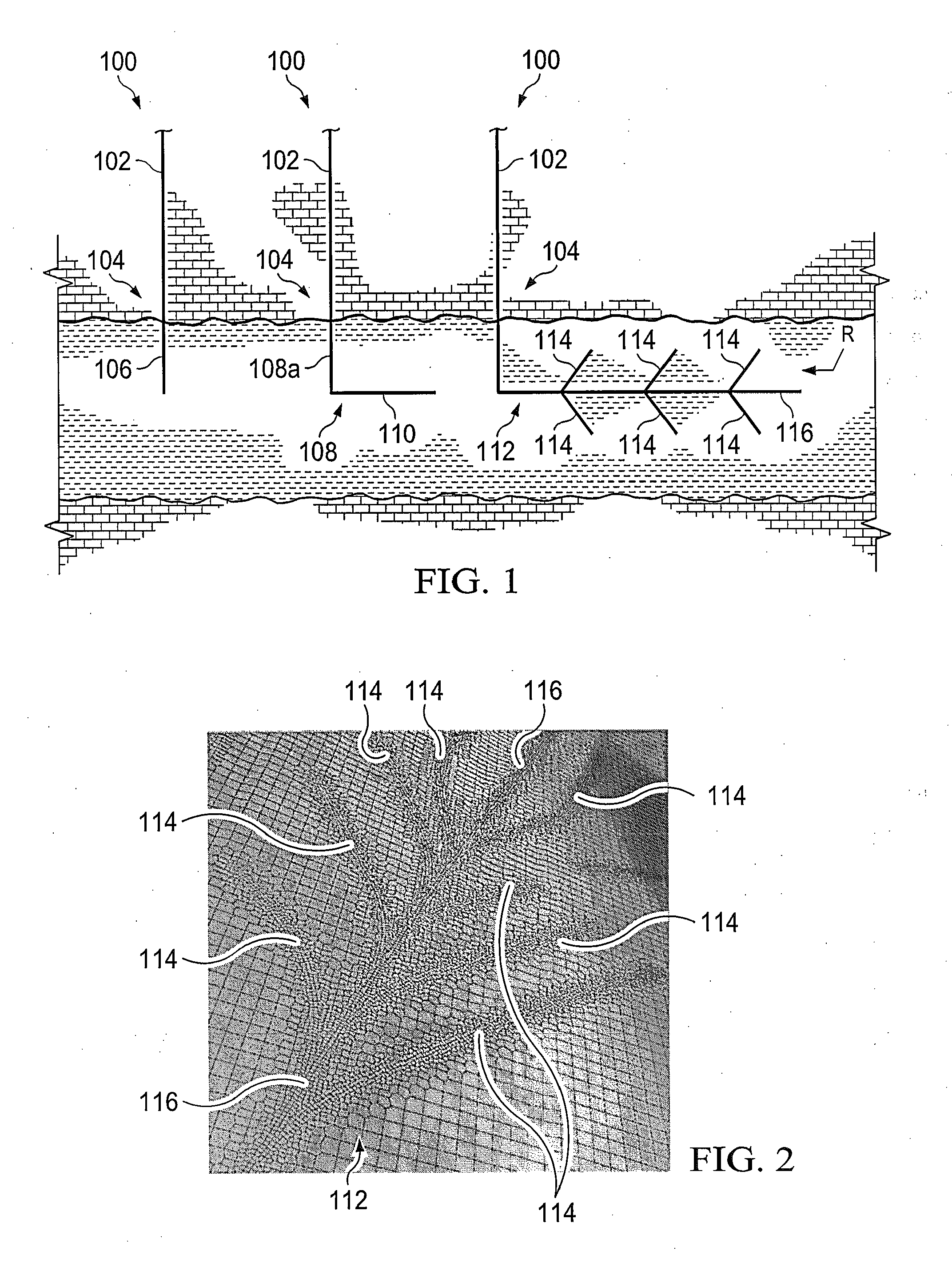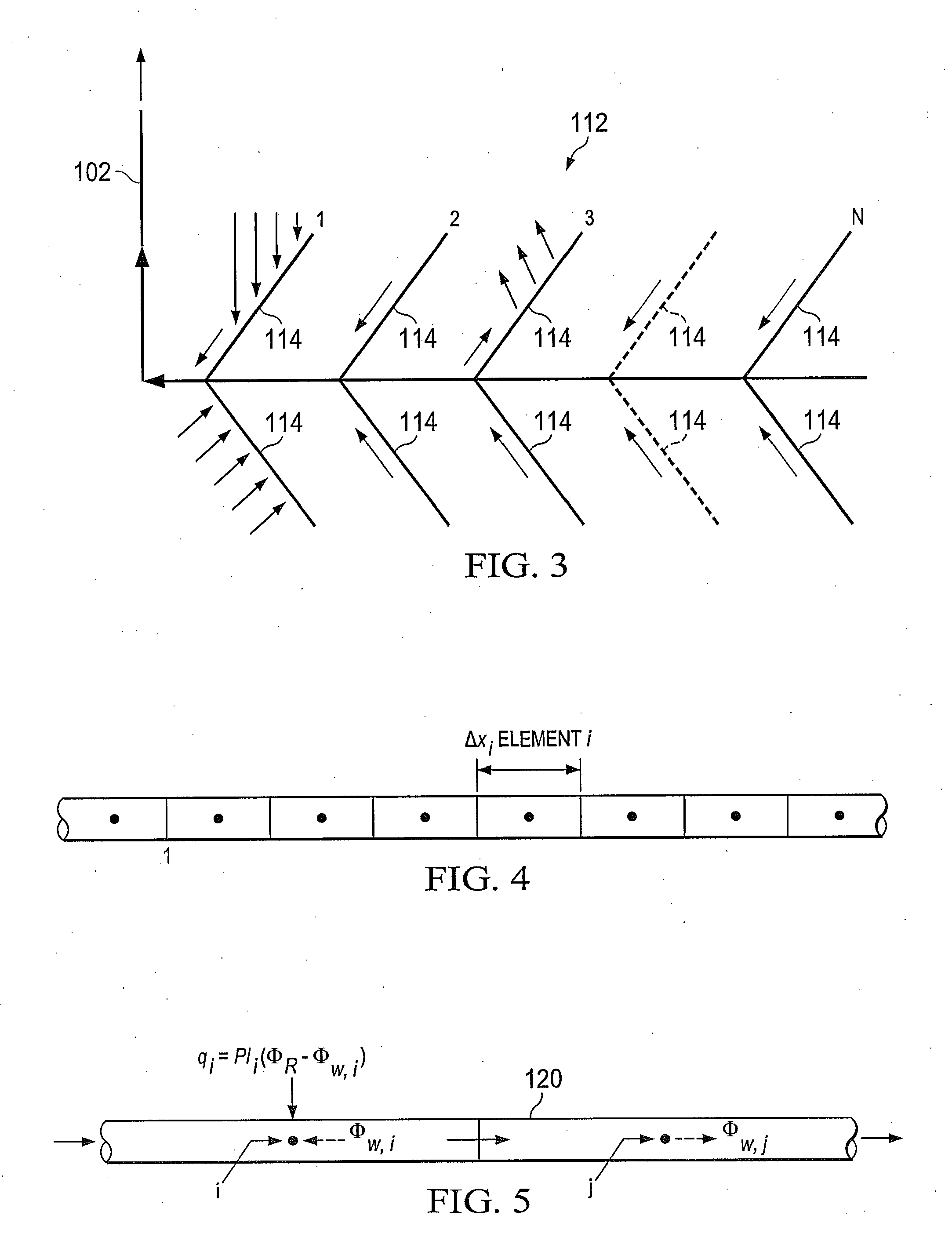Coupled pipe network - reservoir modeling for multi-branch oil wells
a reservoir modeling and pipe network technology, applied in geomodeling, instruments, borehole/well accessories, etc., can solve the problems of large fluid flow, difficult to develop a stable pressure distribution inside the pipe in the reservoir for modeling purposes, and many problems for simulation models handling pipe flow
- Summary
- Abstract
- Description
- Claims
- Application Information
AI Technical Summary
Benefits of technology
Problems solved by technology
Method used
Image
Examples
case 1
[0182]Case 1 is used as a reference to present the coefficient matrix properties. It is not used to solve the entire problem. The pipe is assumed to be filled with porous media (sand) with 1,000Md and the only Darcy's law (Equation 18) holds. In Case 1, the pipe is treated as porous media. As shown in the first column of the Table 2, the transmissibility in (17) is very small, i.e 1.55e-3 b / d / psi. The Coefficient matrix is well conditioned with Condition Number, as defined above, is 52.8.
[0183]In Table 2, the Maximum, minimum eigenvalues of the coefficient matrix and determinant are given, as defined above. It can be seen that the eigenvalues (Columns 6 & 7 of Table 2) are positive.
[0184]Since the equations are linear, it was not necessary to do any iteration, and pressure distribution in the well is calculated in one step. But these pressures are not the same if the pipe is treated as a pipe as will be seen below. Again, this example forms a basis of comparison in terms of coeffici...
case 2
[0185]Case 2 is an actual pipe flow problem using the methodology illustrated in FIG. 13. The second row of Table 2 shows the results obtained from the pipe flow calculations. First, an equivalent pipe transmissibility was determined using Equation (20) and found to be 75.7 as opposed to the porous medium (fractured rock) transmissibility, 1.55e-3 which is about 53,000 larger.
[0186]The pipe transmissibility value of 75.7 was used to determine an initial estimate of the pressure distribution for the non-linear Newton iterations (Equation 8). It can be seen that the condition number of the coefficient matrix (Column 7 in Table 2) for Case 2 resulting from the linearization is much worse than the porous media equivalent, i.e., 390.79 as opposed to 52.8.
[0187]The determinant of the coefficient matrix came much closer to zero, indicating a highly ill-conditioned system, i.e., 5.44e-13 versus 8.19e-2. Eigen values are no longer positive: 18 of them are negative and 9 of them are positive....
case 3
[0188]Case 3 assumes that initial pressure estimates are determined assuming pipe flow replaced by a porous system with an approximate fracture transmissibility estimate of 1.55e-3 b / d / psi. No pipe flow equivalent transmissibility is calculated. After determining the initial estimates, non-linear pipe flow determinations are performed as described above.
[0189]It can be seen from Table 2 Case 3 that due to the nature of the pipe flow and a bad initial estimate, the coefficient matrix formed for the Jacobian has a worse condition number than Case 2. Also, the determinant is much closer to zero: 4.e-17 for Case 3 versus 5.44e-13 in Case 2. Eigen values show more spread with a minimum of −0.015. Such a system is highly ill-conditioned and iterations diverged. No solution was obtained.
PUM
 Login to View More
Login to View More Abstract
Description
Claims
Application Information
 Login to View More
Login to View More - R&D
- Intellectual Property
- Life Sciences
- Materials
- Tech Scout
- Unparalleled Data Quality
- Higher Quality Content
- 60% Fewer Hallucinations
Browse by: Latest US Patents, China's latest patents, Technical Efficacy Thesaurus, Application Domain, Technology Topic, Popular Technical Reports.
© 2025 PatSnap. All rights reserved.Legal|Privacy policy|Modern Slavery Act Transparency Statement|Sitemap|About US| Contact US: help@patsnap.com



